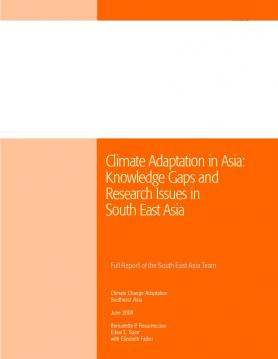You are here
Climate Adaptation in Asia: Knowledge Gaps and Research Issues in South East Asia
Overview/summary:
The Southeast Asia (SEA) region is widely diverse politically, economically, and culturally, yet faces common challenges of impacts of climatic change and variability, poverty and inequity, and increasing vulnerabilities arising from rapid urbanization, degradation of resources and unsustainable development. Largely tropical and monsoonal, the region consists of countries that are low lying and archipelagic (Indonesia, Philippines, Malaysia) and others that comprise a contiguous landmass sharing common borders and rivers such as the riparian countries of Thailand, Lao PDR, Cambodia, Vietnam and Myanmar. While agriculture and fishing continue to be the mainstay of national economies and livelihoods, especially for the poor, the region also is experiencing rapid urbanization, industrialization and expanding commercial tourism that are strengthening economic development but placing stress on fragile natural resource systems and exacerbating social inequities. Climatic changes are expected to severely impact those most dependent on natural resources for their livelihoods, such as poor farming and fishing families, but also vulnerable populations living in urban, peri-urban and rural areas near coasts and deltas. The region is expected to experience increases in frequency and intensity of tropical cyclones, storm surges, sea level rise, and increased flooding, particularly in Vietnam, Philippines and Indonesia. Increased variability in rainfall patterns across the region, especially in the Mekong Region, is resulting in drought and disastrous floods, with serious implications on people’s livelihoods and food security.
Copyright © 2020 Grow Asia Terms of UsePrivacy PolicyContact Us

